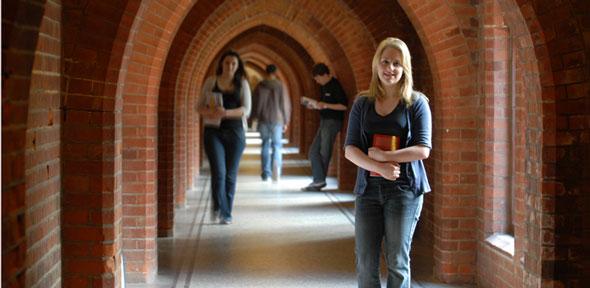
The following provides background information on the key proposals contained in the recently published Green Paper.
The Higher Education Green Paper, Fulfilling our Potential: Teaching Excellence, Social Mobility and Student Choice, is a consultation document published by the Department for Business, Innovation and Skills (DBIS) on 6 November, 2015. It outlines the government’s vision for the future of higher education in England, and invites views from the public on its proposed reforms for the sector. The deadline for responses is 15 January, 2016.
One of the Green Paper’s proposals is the introduction of a Teaching Excellence Framework that would measure the teaching quality delivered by different higher education institutions and ‘incentivise’ efforts to improve teaching quality. There is also strong focus on social mobility and widening participation – not only on access to higher education, but also on the ‘progression and success’ of students from disadvantaged and under-represented backgrounds.
A further section of the Green Paper outlines the government’s proposals to open the sector to new providers and accelerate the process by which a provider can secure university title.
Underpinning these reforms is a proposed new and simplified architecture. The centre piece would be the Office for Students (OfS), which would carry out some of the functions of HEFCE and OFFA. The Green Paper hypothesises a ‘landscape without HEFCE’, setting out options for the distribution of HEFCE’s functions such as the allocation of the teaching and research (QR) grants.
The paper is divided into four parts:
Part A: Teaching excellence, quality and social mobility
- The aim of the TEF would be to drive up teaching quality and ensure prospective students are able to identify high-quality providers
- The more impressive the ‘teaching excellence’ of an institution, the higher the TEF level it would receive. Higher TEF levels would unlock permission for institutions to charge higher fees to new students. The higher the TEF level, the greater the permitted increase in an institution’s tuition fees
- The TEF’s methodology would be informed by the outcome of a ‘technical consultation’ (2016) on potential metrics, assessment process and incentives
- As part of the TEF methodology, the Green Paper proposes that providers would submit ‘institutional evidence’ to attest to their teaching quality
- Institutions would need to apply to be assessed for TEF levels higher than level 1. To be eligible for assessment for a higher level, institutions should be able to demonstrate they are ‘fulfilling widening participation expectations’
- In terms of social mobility, the Green Paper identifies the ‘progression of white males from disadvantaged backgrounds and the success of BME groups in higher education’ as a major focus of the Director of Fair Access (DfA). The DfA’s role may be expanded
- The Green Paper suggests that a new Office for Students could set targets for higher education providers ‘failing to make progress on agreed widening participation goals’
- It is envisaged that the TEF would ‘recognise the efforts that providers make to improve the access and experience of students from all backgrounds’.
Part B: The higher education sector
- The government outlines its intention to create a ‘single route of entry’ into the higher education sector for new providers, which would be operated by the OfS
- The process for a new provider to acquire degree-awarding powers, and to secure the title ‘university’, would be fast-tracked, enabling successful providers to acquire the title within six years
- The Green Paper indicates that ‘market exit’ by some providers is anticipated.
Part C: Simplifying the higher education architecture
- In redesigning the higher education architecture, the government intends to ‘place the prime emphasis on championing the interests of students’, given that students now ‘meet the majority of their course costs through their fees’. This would be reflected by the creation of an Office for Students
- The Green Paper suggests that HEFCE’s functions ‘would transfer to other bodies’, with the OfS assuming responsibility for quality assurance and TEF functions, and the data function
- The functions of the Director of Fair Access (DfA) and OFFA would also be transferred to the OfS, although the role of DfA would be preserved and fortified within the OfS
- The OfS would have a duty ‘to promote the interests of students to ensure that the OfS considers issues primarily from the point of view of students, not providers’
- The Green Paper floats two options for the calculation and allocation of the teaching grant to universities: either by BIS officials, or by the OfS. It asks for views on these options.
Part D: Reducing complexity and bureaucracy in research funding
- The Green Paper restates the government’s commitment to the Haldane principle, as well as the dual support system for research funding
- It hypothesizes that the distribution of quality-related research funding (currently managed by HEFCE) could be transacted by the same ‘overarching body’ that awards research funding to UK institutions and individuals, currently the UK Research Councils. Otherwise, a new body would take on HEFCE’s role of distributing quality-related research funding
- The paper mentions that Sir Paul Nurse’s review of the Research Councils – and how they can evolve to support research in the most effective ways – has not yet concluded. While not pre-empting Sir Paul's work, it acknowledges that recommendations from that review will further inform the proposals on research funding and structures
- The next peer reviewed Research Excellence Framework (REF) would be held by 2021, although the government wants to consider whether there are opportunities to ‘streamline and reduce burdens in the design of a future REF’.
Comprehensive Spending Review
The Green Paper does not provide details on the financial settlement for England’s higher education providers; nor does it reveal projections of public spending on UK science and research. This information will be unveiled on 25 November 2015, when the Chancellor of the Exchequer announces his Comprehensive Spending Review.
